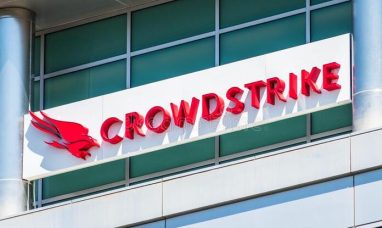Disney (NYSE:DIS)
Disney (NYSE:DIS) remains a buy for us. Given that we believe Bob Iger’s turnaround plan will increase Disney’s emphasis on profitability, we are more optimistic about the company. Stock is trading at its 52-week low of $84, down roughly 27% from a year ago. At these prices, Disney stock offers a good risk-reward ratio. We previously wrote on Disney in late November with an optimistic feeling fueled by our conviction that the firm will accelerate revenue growth and expand Disney+ subscribers with the return of Iger. Although we remain optimistic about revenue growth recovering, our current bullish view is underpinned by Disney’s emphasis on profitability and decreasing expenditures, notwithstanding the tough economic environment.
The first quarter of fiscal year 23 profits for Disney show the company’s progress toward profitability. Iger claims management strives to “reshape our company…reducing expenditures, which will lead to sustainable growth and profitability for our streaming business.” Earnings for the quarter were better than expected in terms of revenue and profit. However, slower growth was recorded for several segments. We saw an increase of 8% in quarterly revenue and an increase of 5% in segment operating income to a total of $1,773M. Although we are optimistic about Disney’s place in the media and entertainment industries, we think restructuring is necessary for the firm to restore substantial profitability. Of the segment’s total sales, 62.8% came from Disney’s Media and Entertainment Distribution, which increased by just 1% year over year and had an operational loss. We anticipate Disney will restructure its business to boost its streaming earnings as it gains greater pricing power in the streaming market in the second half of fiscal year 23 (2H23). We think investors should purchase the dip in the stock price during the last year and be ready for a more lucrative firm in the future.
Increasing Revenue From Streams
Despite Disney’s weak rise in subscriptions in 1Q23, we don’t think the corporation is that worried since they are likely changing their attention from subscriber statistics to revenue. Netflix had a similar situation earlier this year. Due to the current economic climate, media, and entertainment corporations must prioritize keeping their income streams growing above discovering how to increase their subscriber bases. We anticipate a modest drop in operating income due to Disney+. Therefore the company will need to quickly determine how to increase the profitability of its streaming services. The average monthly revenue per paying U.S. subscriber of Disney+ is $5.95, down from $6.10 in the October quarter of 2022.
Revenues from Disney’s Direct-to-Consumer segment climbed by 13%. The company’s operating loss widened by $0.5B to $1.1B due to larger losses at Disney+ and lower performance at Hulu. With Iger’s turnaround plan, we have a more optimistic outlook on Disney since we believe the firm will be able to better use its streaming services.
Disney’s renewed emphasis on cost reductions is driven by the lower ad spending environment. The slowing economy is expected to cause advertising agencies to cut down on expenditures in 2023. For this reason, even if the firm increases its ad-supported subscriptions, it will likely see less spending from advertisers in light of the challenging macro climate, further demanding cost-cutting measures. We expect Disney to recover under Iger by the end of the year, despite the stock price being volatile in the short term due to the uncertain macro environment.
Strategy: Cutting Costs and Reorganizing
On the 1Q23 earnings call, Iger expressed optimism about the current cost-cutting and restructuring initiatives. In light of a bigger restructuring, the corporation has declared that it would lay off 7,000 workers (about 2% of its total workforce) and “reduce $5.5B in expenses.” The remaining $2.5B will be slashed from areas other than content. The $5.5B total represents a content-related profit of about $3B. Warner Bros. Discovery (WBD) is also cutting down on content investment to increase profitability in its streaming operation, so Disney is one of many trying to cut costs. Ampere Analysis anticipates the worldwide content spending to expand a small 2% Y/Y in 2023, which would be the lowest growth in a decade, excluding the pandemic downturn in 2020. Iger’s commitment to cutting costs gives investors more hope that the corporation will successfully navigate the macroeconomic climate as a recession looms.
Valuation
Compared to its competitors, Disney stock is selling at a significant discount. The stock’s price-to-earnings ratio of 15.9x C2024 EPS $5.82 is lower than the industry average of 19.1x (19.1x). The Disney stock is selling at a discount to the peer group average of 4.5x EV/C2024 Sales. We propose investors purchase the pullback as we anticipate tremendous upside potential for the company in the mid-to-long term.
Word on Wall Street
Regarding the stock’s future, Wall Street is just as optimistic as ours. The company has an average buy rating of 27 out of the 33 analysts covering it, with the rest having a hold rating. The current price of the stock is $93. An upside potential of 36-40% is implied by the sell-side price targets of $130 (median) and $126 (mean).
Dealing with Disney Stock
Stock analysts have maintained their “buy” recommendation on Disney stock. We anticipate the macro issues to continue into this year, which has been difficult for Disney and the media and entertainment industry. Due to Iger’s cost-cutting and restructuring strategy, which places a premium on increasing streaming profits, we are more optimistic about Disney’s prospects. According to our estimates, Disney is poised to increase its share of the streaming business in the medium to long term. Investors should purchase Disney stock at current prices since the company’s stock is expected to rise in the medium to long run.
Featured Image: Unsplash









